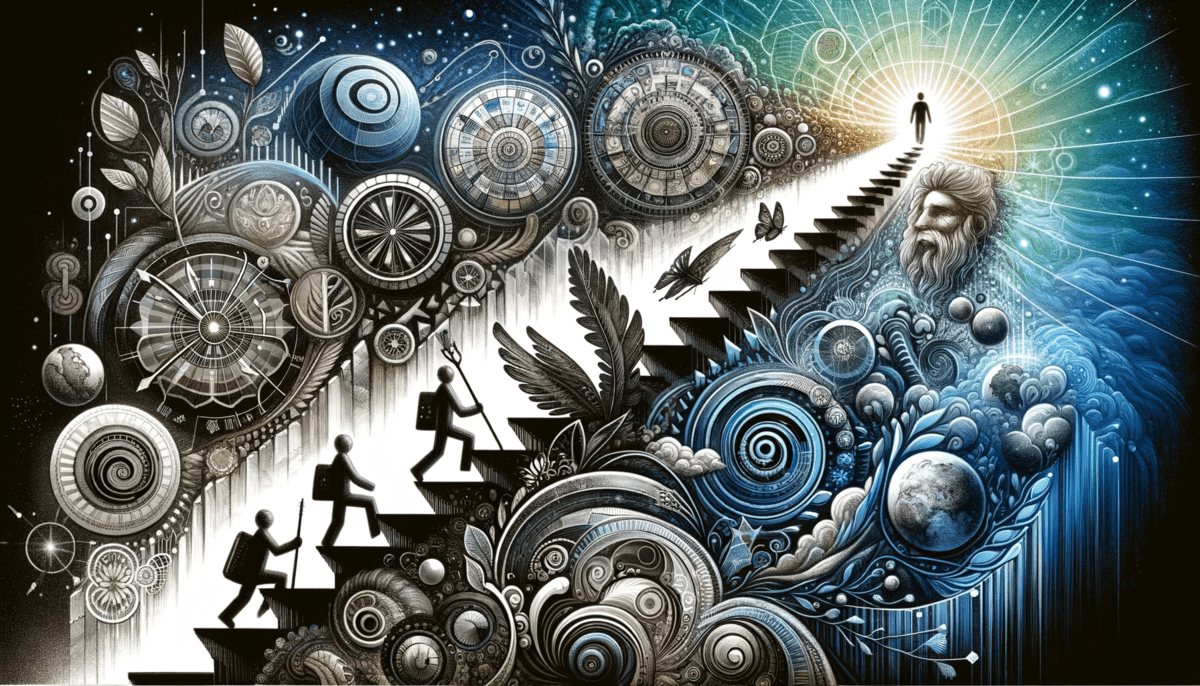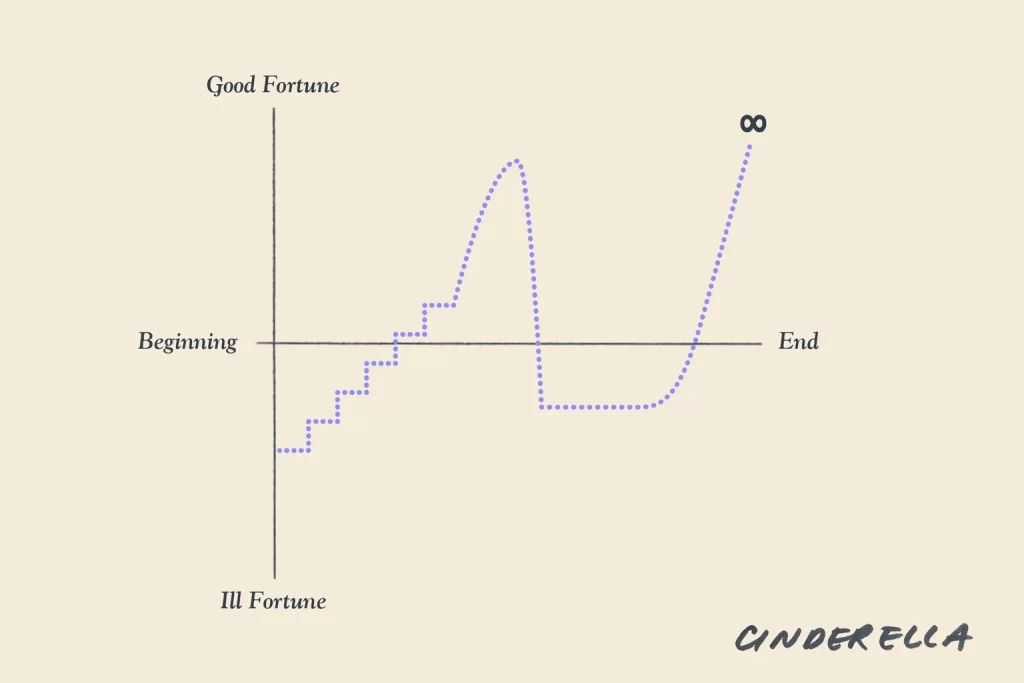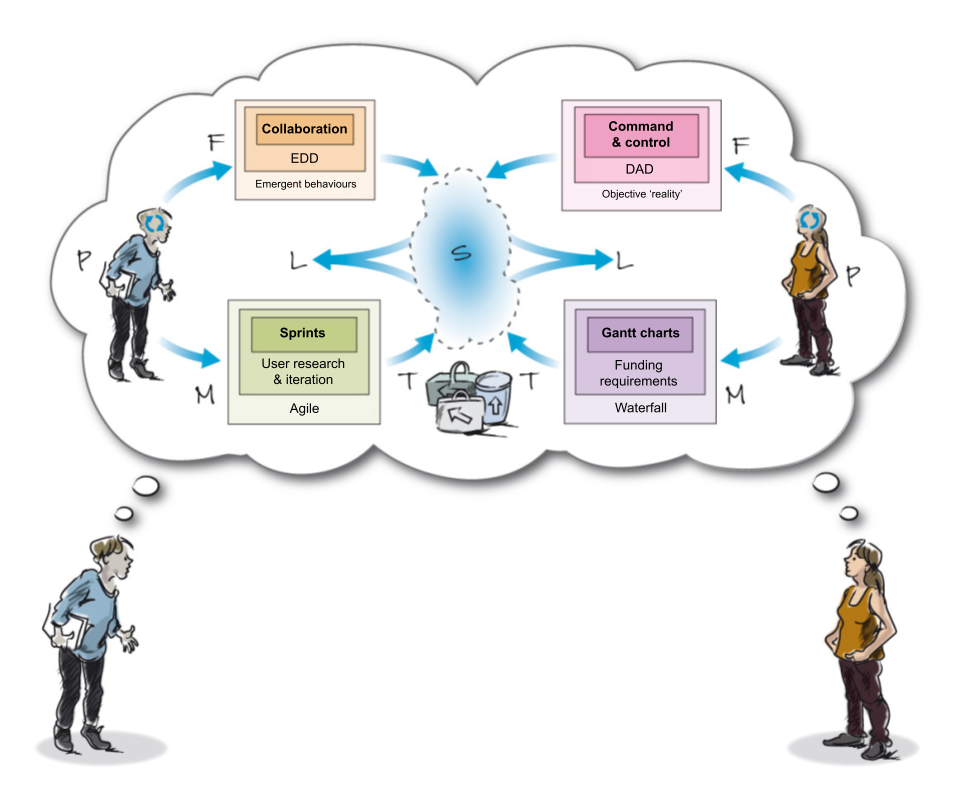TB872: The role of narrative in STiP
Note: this is a post reflecting on one of the modules of my MSc in Systems Thinking in Practice. You can see all of the related posts in this category.

As I get older, I find myself consciously shaping the stories I tell for impact. This might be informally, over a drink or on the side of a football pitch, but equally it could be at work. The stories that we tell about ourselves and others are often, ultimately about identity and worldview. Narratives are therefore a fundamental consideration with Systems Thinking in Practice (STiP).
From the course materials:
Constructing a story or narrative is a very human thing to do. Some people are better at it than others, but at some level we all compose stories that we tell ourselves about what we have done, what we might do or about situations and others. Key capabilities within STiP are:
- to be sufficiently aware i.e. critically reflexive, to appreciate your own stories that make you who you are. These stories/narratives constitute your traditions of understanding out of which you think and act;
- to appreciate the cultural, including professional, narratives in which you and others are immersed;
- being willing to amend our stories i.e., open to learning, when something discordant with our story becomes apparent (even as a sense of unease). We (as individuals, groups, communities, or societies) have the choice of rejecting, adapting or expanding our story;
- to be able to actively listen and create enabling conditions for others to tell their story – something they may have never done before
The table below is one that the course authors shared which they consider helpful for structure when questioning and listening to others.
| Past | Present | Anticipated future | |
|---|---|---|---|
| Issue/driving force/concern | |||
| Action(s) | |||
| Usefulness/result |
All stories have some form of meaning, otherwise there would be little point in telling them. For example, meaning could be literal, it could be symbolic, or it could be ritualistic. Ultimately, though, as I mentioned above, they’re about identity and worldview — confirming or distancing ourselves from some other kind of group.
Narrative can be thought of as a combination of three aspects: (i) stories, (ii) the telling of them and (iii) their meaning. Stories consist of a series of events around a theme as told by the storyteller. In narrative, meaning consists of more than the events alone (as in storytelling) – it also consists of the significance these events have for the narrator and the listeners in relation to a particular theme (Polkinghorne, 1988, p. 160).
A couple of days ago, Andrew Curry reminded me that the author Kurt Vonnegut created graphs to illustrate the world’s most popular stories. He found, like others before and after him, that there are essentially seven types. The one below, for example, is a Cinderella-type story:

Likewise, when you listen to stories from founders of companies, or middle managers, or people who have had a hard life, you start to be able to categorise them. This can be particularly useful when working with clients, as you can either reinforce the story that they’re telling others (and therefore themselves) or you can help them change their story (and therefore their self-image). This works for organisations as well as individuals, because what are organisations other than collections of people?
The example I’ll share reinforces the DAD vs EDD post I wrote yesterday, based on course materials I found particularly enlightening. I’ll use the table above as a structure to indicate a clash between the story that the founder was telling themselves and their organisation, and the story we as consultants were trying to tell them.
To recap: the acronym DAD (decide-announce-defend) describes an approach where an individual or organisation decides on something, announces it to stakeholders, and then has to defend the decision when things don’t go to plan. The acronym EDD (engage-deliberate-decide), meanwhile, describes a transparent, collaborative, and inclusive process with stakeholder engagement from the outset.
I think it’s fair to say that the client, run by a founder who is well-known in the sector, employed a DAD approach to change. The organisation in question provided a tool which was used widely in the sector they support. However, they realised that it needed updating and so asked one of our more technical sister cooperatives for some help. That co-op brought us in to help with some of the change management side of things.
Without getting into details, on reflection the following table summarises the narrative from the client’s point of view:
| Past | Present | Anticipated future | |
|---|---|---|---|
| Issue/driving force/concern | Important big issue for sector | Improving and scaling the tool with funding from partner org | Financial sustainability and relevance |
| Action(s) | Creation of tool to help with big issue in sector | Getting in outside technical help to assist with tool and map future options | Increased funding, hiring, and training |
| Usefulness/result | Establishment of metrics for the sector | Iteration of tool and creation of new tool to help with big issue in sector; hiring of new Digital Lead role | Increased digital capacity |
We did a lot of work on this project, but ultimately the vision terrified the founder. We moved too quickly for them, leaning too heavily on our ‘expert’ credentials and not explaining well enough their next steps.
From our point of view:
| Past | Present | Anticipated future | |
|---|---|---|---|
| Issue/driving force/concern | Important big issue for sector; reputation of organisation and founder in particular | Financial stability and relevance of the organisation | Increased organisational relevance, reputation, and impact |
| Action(s) | Creation of a tool which was created and maintained by a freelancer (who was sometimes unavailable) | Working collaboratively with sister co-op on deliverables for current project; mapping future options to diversify funding | Making first digital hires, announcing pivot in business model |
| Usefulness/result | Establishment of metrics for the sector, based on a tool which was increasingly unfit for purpose | Documentation of a different business model to enable a new version of the tool(s) to be white-labelled by other organisations | Diversified funding streams, impact on big issue for sector, long-term sustainability |
The subtle mismatch between these tables was enough for us and the organisation to decide to go our separate ways. Although we did help them make their first digital hire, that person then, in effect, became their in-house consultancy.
Reflecting on this using the modified PFMS heuristic introduced in this activity (L = Learning, T = Tools):

Together with the tables, this diagram should help explain how the difference in frameworks and methods led to a lack of shared future vision for the organisation. We reflect on this occasionally as a co-op in relation to current clients. This activity has helped me, personally, understand what happened in a new way. Although we tried to be consultative, the clash of frameworks was never adequately resolved, meaning that the founder could describe us as ‘not understanding’ the sector.
If and when I come across this situation again, I will explicitly use the DAD vs EDD language to explain the importance of early stakeholder engagement, iteration, and a systemic view of the problem in hand. In founder-led organisations, there tends to be a lot of ego and emotion bound up with the future success or failure of the organisation, which we would do well to remember. Sometimes things need to be said one-to-one instead of to a wider group.
Image: DALL-E 3

Another terrific image from DALL-E 3. It would have cost between 6 and 12 cents to produce. https://mastodon.social/deck/@Downes/111523610406054089
If people don’t understand how this compares with the cost of hiring a graphic designer, they’re not paying attention.
Off-topic, I know, but that image…
Glad you like it! I always get it to generate “three abstract 16:9 ratio images” based on the text and then I iterate my favourite. It sometimes gets obsessed with briefcases 😅
Thanks for the Fediverse thread link. Interesting discussion!